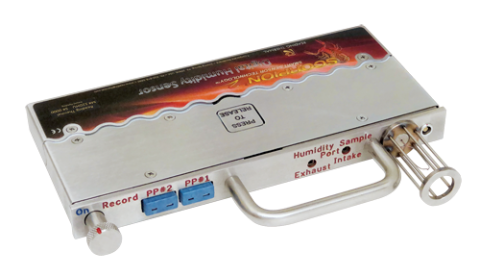Digital humidity sensors for industrial bakery ovens from Reading Thermal are essential components. They help monitor and control the moisture levels during the baking process. Proper humidity control is crucial for achieving baked products’ desired texture, flavor, and shelf life. The following is a look at their importance, how they work, key features, and benefits.
Why Humidity Control Sensors Are So Essential to the Baking Process
Humidity levels directly impact the texture and crust formation of baked goods. Proper humidity control ensures products have the desired softness or crispness. Consistent humidity levels during baking result in uniform products, enhancing customer satisfaction and brand reputation.
In addition, controlling humidity helps maintain the moisture content of baked goods, extending their shelf life and reducing waste. Optimized humidity control can improve energy efficiency by reducing the need for frequent adjustments and maintaining steady baking conditions.
How They Work
Digital humidity sensors measure the amount of water vapor in the oven’s air. They use various technologies, such as capacitive, resistive, or thermal conductivity methods, to detect humidity levels accurately. The sensors then convert these measurements into digital signals, which are processed and displayed by a control system.
Key features of Reading Thermal digital humidity sensors include:
- High accuracy and precision: High-quality sensors are essential for reliable humidity monitoring and control.
- Real-time data: Our sensors provide immediate feedback on humidity levels, allowing for prompt adjustments to maintain optimal conditions.
- Durability and reliability: We designed our sensors to withstand the high temperatures and harsh conditions of industrial ovens.
- Easy integration: Reading Thermal sensors are compatible with existing oven control systems for seamless monitoring and management.
Implementation in Industrial Bakery Ovens
While Reading Thermal sensors are easy to implement, there are a few considerations you should keep in mind. These include the following:
- Installation: Digital humidity sensors should be strategically placed within the oven to monitor critical points where humidity control is most important.
- Calibration: Regular calibration is necessary to ensure the accuracy and reliability of humidity measurements. Calibration should follow the manufacturer’s guidelines and industry standards.
- Data monitoring: Continuous monitoring of humidity levels helps maintain consistent baking conditions. The data can be logged and analyzed to identify trends and make informed decisions.
The Benefits of Using Digital Humidity Sensors
Accurate humidity control ensures that baked goods achieve the desired texture, improving overall quality. Consistent humidity levels result in uniform products, reducing variations and defects.
Another significant advantage of using our sensors is that they ensure proper moisture control, which helps maintain baked goods’ freshness and shelf life. Optimized humidity control can lead to more efficient energy use, reducing operational costs. Finally, maintaining accurate humidity records can help ensure food safety regulations and standards compliance.
When you use our sensors, you can rest assured they’ll always work at peak performance. These are just a few of the challenges Reading Thermal sensors can help you overcome:
- Harsh environmental conditions: Industrial ovens can be harsh environments for sensors. Our robust, industrial-grade sensors can handle this environment day after day.
- Data management: Managing and analyzing humidity data can be complex. Advanced data management systems from Reading Thermal can streamline this process.
- Maintenance and calibration: Regular maintenance and calibration are essential for ensuring the accuracy and longevity of humidity sensors. Our experts will happily show you how to keep your sensors operating for years.
Find out more about Reading Thermal digital humidity sensors for industrial bakery ovens by contacting us online or calling 610-678-5890.

